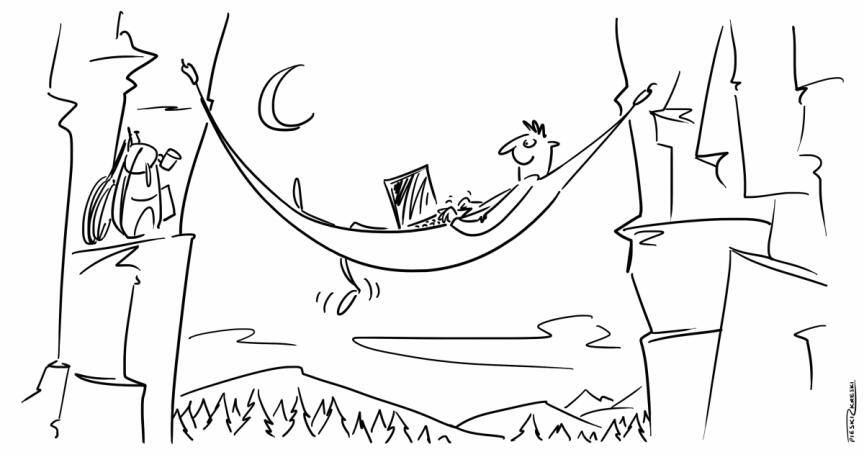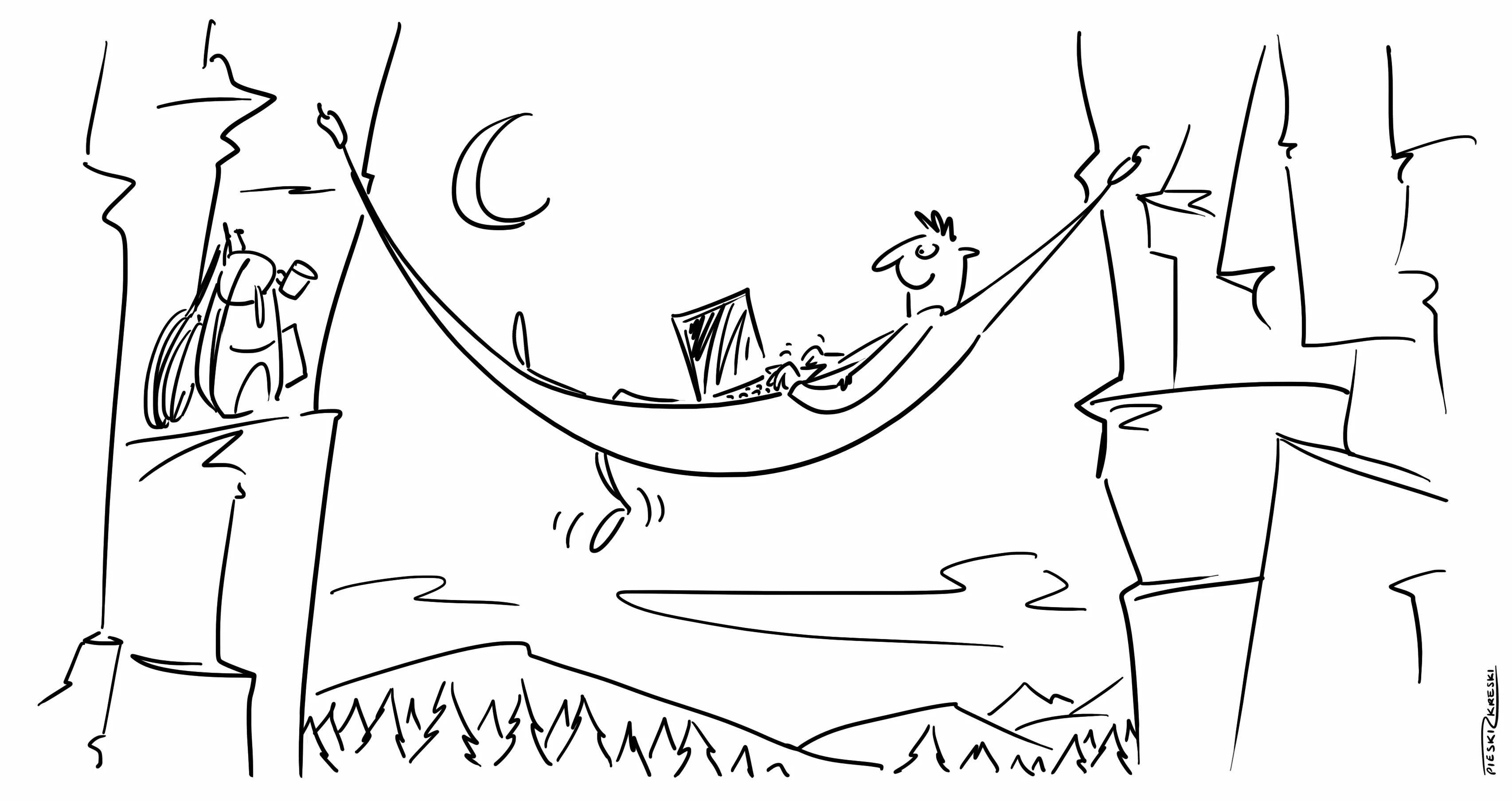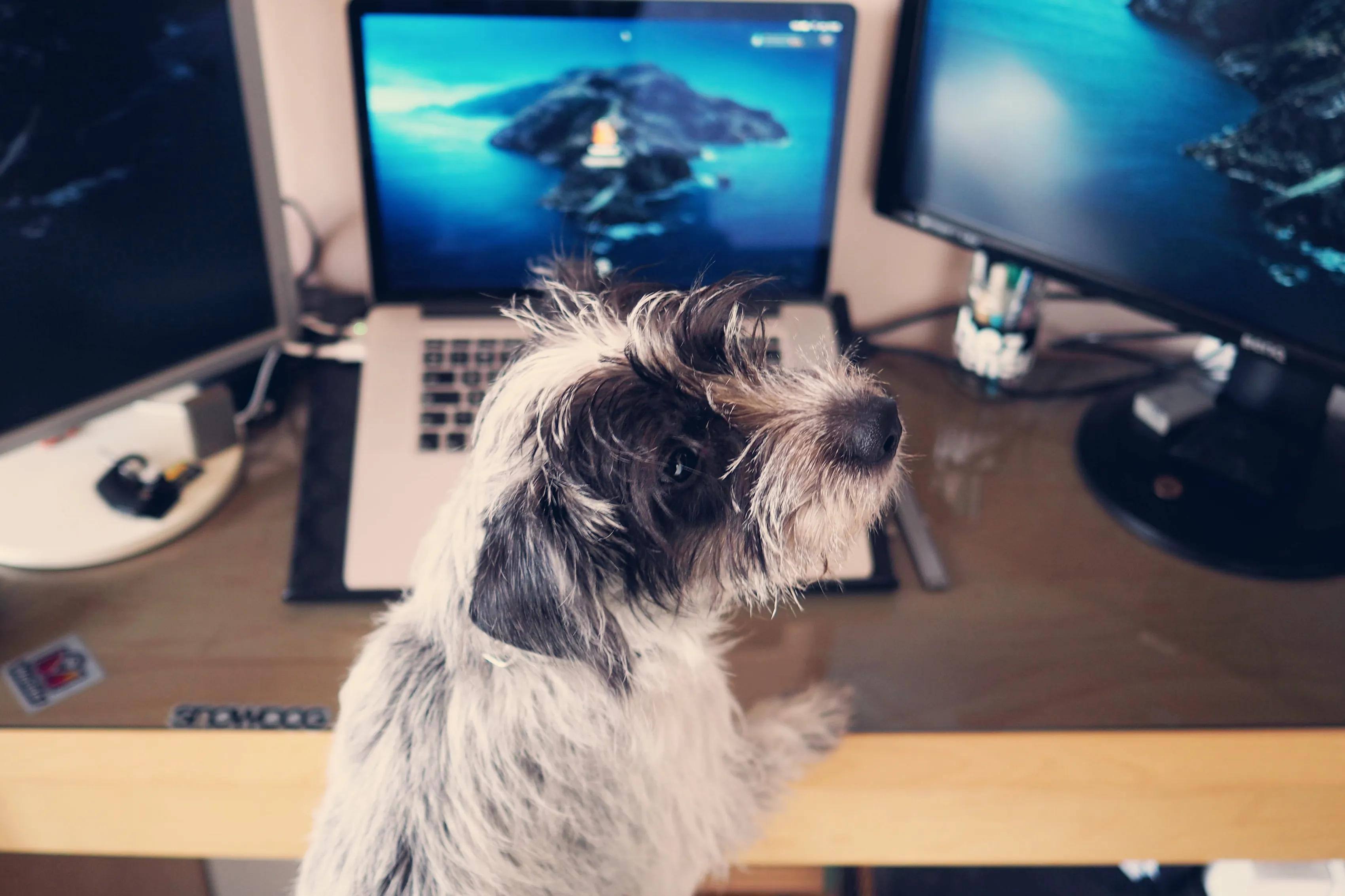
Curious about the job opportunities at Snowdog? Just take a glance at our 'open roles' page and you'll see a recurring theme: "Fully flexible working time—the only limit is common sense" and "Possibility of remote work—without additional explanations." It's crystal clear: at Snowdog, you have the freedom to work whenever and wherever you please.
But what exactly does it mean to work flexibly and remotely? How does this dynamic impact the relationship between employees, employers, and teammates? And how does it differ from the traditional 9-5 structure with its fixed hours and location? Let's delve into these questions and explore the world of flexible and remote work.
Embracing Freedom: Exploring Flexible Working Hours and Remote Work
Both flexible working hours and remote work are a direct result of the omnipresent Internet. It’s kind of an obvious statement, but let’s not underestimate the extent to which the World WideWeb has changed, and is continuously changing, our lives. Now, many types of work can be done without leaving your house or in spaces that were not designed with work in mind, such as airport lounges or park benches (as long as there’s WiFi!).
One of the biggest advantages of such a system is adaptability. In this way, every employee can build their day with their unique needs in mind. Some people work their best with a tight time schedule and in a set location. Others thrive when there are no limitations as to when and where they can work. There is no right or wrong — the only correct approach is to give people a choice. And that is exactly what flexible working hours and remote work are all about.
Such an approach goes beyond just work. For example, flexibility gives working parents a chance to pick up their kids from school at a time when they’d usually be at the office. In case of sickness, they can stay and be around their child. It gives introverts a chance to stay in and extraverts a possibility to go where it’s busy.
In its essence, flexibility and remote work give employees a chance to view their jobs not as eight hours set in stone, but rather as a customizable set of tasks that can be done with much less strain on personal life.
Breaking Free from the 9-5 Mold: A Comparison of Flexible Hours and Remote Work
The classic 9–5 system, or an 8-hour day, is a result of years of 19th and early 20th century workers’ struggle to reduce their workload from anything between 12 and 16 hours a day. While it has certainly served its purpose, the 9–5 couldn’t help but become quite obsolete in the age of the Internet. Nowadays, a lot of the tasks that previously required people to be present in person, can successfully be done using a computer or even a smartphone. The omnipresence of the Internet has made this shift in our working styles kind of inevitable. But how does flexibility compare with a rigid 9–5?
The Evolution of Work: Saying Goodbye to Eight-Hour Days
If you’ve ever worked, or are working a 9–5, we have two questions for you. How many days have you had where you’d spend hours sitting by your desk because there was nothing to do? And how many times have you felt your productivity sink around 2 p.m., but the unforgiving clock arms would forcibly hold your head afloat? You’re definitely not alone!
A study conducted in 2017 on 600 employees has shown they only spent around 39% of their workday doing actual work. Another experiment went a step further and offered employees the possibility to work six hours a day, which increased their productivity and positively impacted their mental health.
Going even further, a 2014 research paper published in the American Journal of Industrial and Business Management argues for flexible and remote work, claiming its beneficial impact on work-life balance as well as employees’ commitment to their jobs and companies.
Seems like flexible and remote work is the future. Well, at least until we come up with something even better!
How do we solve that at SNOW.DOG? We use time trackers and ask our employees to track at least six hours a day. They can do more if they want to, of course, but that’s our basic requirement. Whether you work these six hours in a classic day-job schedule, or in the middle of the night, it’s all up to you! What is more, after finishing their trial period, each of our employees receives an app with keys to our Poznań office, where you can come and work anytime, even in the middle of the night if you’d like.
Fully remote work gives both sides a wider pool to choose from
This is as obvious as it gets. How many times have you seen an amazing job ad that would suit you just right… except it’s in LA. Or Bangkok. Or Tokyo. Or any other place you’re not planning on moving to in the near future.
It goes the other way around. Without the possibilities, remote work gives, companies were limited to their country of operation and perhaps some neighboring ones. Now, they can easily hire people from the other side of the globe! This is a strategy we’ve implemented at SNOW.DOG, too! Here you can read about Hadi — our recent new hire who works fully remotely from his native Lebanon.
Work-life (un)balance
Every time you leave your house to go to the office, you take a huge sharpie and draw a thick red line that separates your work from the rest of your life. Having two distinct spaces for work and for life definitely helps keep that balance in check.
The danger of remote work is having that line blurred or completely erased. It’s easy to fall into a ‘just one more email/task/paragraph’ mindest or go on work binges (it’s like watching a whole season on Netflix, but instead you just work for a bunch). If you’re a remote worker, be wary of signs of your work overtaking too much of your time. Without a clear indication as to when you’re supposed to go home, and with work taking place in the same space where you live, your tasks may start negatively influencing the other vital spheres of your life — relationships, hobbies, spare time, or even proper nutrition.
Want to know how to prevent that? Read on!
Mastering the Art of Flexibility and Remote Work: Essential Advice for Success
Two sides of the same coin
Sure, it’s nice to work from home or your favorite cafe or to sleep in and start at 12 p.m. The freedom that flexibility and remote work grant is truly incredible. But the trust given to you that your tasks will be finished on time implies a responsibility on your side.
What does it mean?
It’s easy for us to be more lenient towards ourselves when we get to spend a whole workday in sweatpants, as opposed to the office. And there are always things to do around the house. Cooking dinner, cleaning up a bit, doing groceries — they can take up a significant chunk of your time. By that, we’re not trying to say that you should put work above everything else in your life, but do keep in mind that the flexibility of the modern workplace means that each employee has to be more self-determined and driven than ever before.
Your team needs you
No one exists in a vacuum — we’re not lonely islands. We’re surrounded by people who need and depend on us and our contributions. In this way, choosing to work outside of the traditional 9–5 schedule can have an effect on the rest of your team. Emails can wait for replies a bit longer, tasks might get stretched and processes may not go as smoothly as they could. Work still has to be done, though, whether you’re working from your couch or at the office. And as a part of a team, it’s usually the case that each member has to be on the same page in order for a certain project to get successfully completed.
That’s why it’s important to let your team know about your chosen location and schedule. It allows members to adapt their workload so that everyone stays on the same level.
At SNOW.DOG we don’t ask about the reasons for you choosing remote work or flexible hours. It’s not that we don’t care about our coworkers, but rather we respect their privacy and a right to make choices that are the best for them. However, keeping in touch with your team and communicating your unique needs is just a nice thing to do — it ensures that great teamwork is still there, even when members are not sitting face to face. This is especially important for Project Managers. After all, they are the ones responsible for organizing and scheduling the workload.
Don’t get lost
When working from home, it’s easy to get lost in your tasks. It’s kind of like playing a video game, reading a book, or watching a series. How many of us have put some Netflix on in the afternoon, only for it to turn into 2 a.m. in a blink of an eye?
But books, series, and games are relaxing. Work, on the other hand, is all about challenge and focus, as well as reaching goals. That’s why, sometimes it’s hard to escape a sense that we haven’t done enough in a day, especially when you’re working at home, outside of the office. Sure, going on little breaks with your colleagues can be distracting, but it’s also a valuable time when we allow our minds to relax and reset. At home, we can grind for hours on end, which can lead to overworking and, ultimately, burnout. Work is important, but make sure to make time for other things — at Snowdog, for example, we organize SnowCoffee calls for all the remote employees to have a chance to get together, have a cup of coffee, and well, just chat.
Keep your mental wellbeing in mind
Everyone has different needs as far as human contact goes. Some people must have a buzz around them to flourish, others don’t mind being on their own for longer periods of time. In 2020, as the home office became quite a staple for many to follow, regardless of their preferences, it’s vital to keep your mental wellbeing in mind. If you’re feeling isolated from your coworkers, don’t hesitate to reach out. Whether it’s your loved ones, friends, or teammates — don’t keep yourself out from human contact for too long.
Working flexibly, especially when it’s outside of the traditional business hours, can have a similar effect. Emails can feel as if thrown into a void and scrolling through names in a chat, with each saying ‘active X hours ago’ can be a lonesome experience. It might feel as if there’s no one really to talk to. Again, in such cases — reach out to someone!
On the other hand, make sure to check up on your colleagues to see if they need any help. If they’re struggling, they’ll certainly appreciate your assistance and care. Sometimes a simple ‘how are you doing?’ can change a lot. Be there for your teammates!




